Serving 25 students in grades Kindergarten-12, Extensions Correspondence ranks in the top 10% of all schools in Alaska for overall test scores (math proficiency is top 10%, and reading proficiency is top 10%).
The percentage of students achieving proficiency in math is <50% (which is higher than the Alaska state average of 23%). The percentage of students achieving proficiency in reading/language arts is <50% (which is higher than the Alaska state average of 29%).
The student:teacher ratio of 25:1 is higher than the Alaska state level of 15:1.
Minority enrollment is 64% of the student body (majority American Indian), which is higher than the Alaska state average of 53% (majority American Indian).
Quick Stats (2025)
- School Type: Online School
- Grades: Kindergarten-12
- Enrollment: 25 students
- State Accredited: No
- Live Instruction: No
- Rolling Enrollment: No
- Student:Teacher Ratio: 25:1
- Minority Enrollment: 64%
- Overall Testing Rank: Top 10% in AK
- Math Proficiency: <50% (Top 10%)
- Reading Proficiency: <50% (Top 20%)
- Source: National Center for Education Statistics (NCES), AK Dept. of Education
Top Rankings
Extensions Correspondence ranks among the top 20% of public schools in Alaska for:
Category
Attribute
Overall Rank
Most improved public schools
Math Proficiency
Reading/Language Arts Proficiency
Diversity
Community Size
School Overview
Extensions Correspondence's student population of 25 students has grown by 47% over five school years.
The teacher population of 1 teachers has stayed relatively flat over five school years.
School Type
Grades Offered
Grades Kindergarten-12
Total Students
25 students
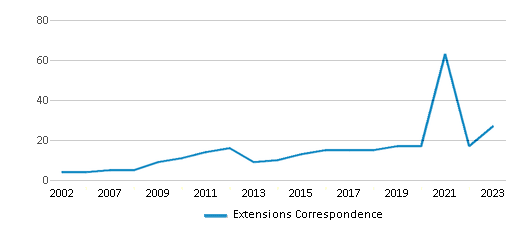
Gender %
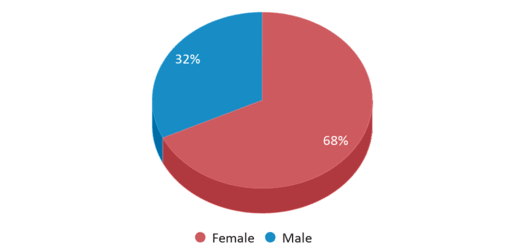
Total Classroom Teachers
1 teacher
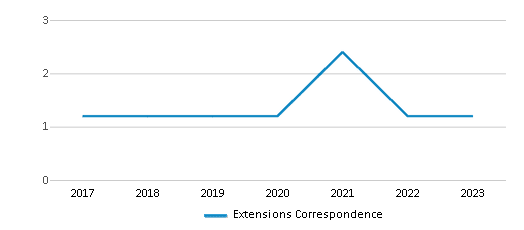
Students by Grade

State Accredited Program
No
Personalized Content
No
Live Instruction
No
Rolling Enrollment
No
Flexible Class Schedule
Yes
Accelerated Offerings
No
Classes for Credit/Part Time Options
No
Dedicated College Counselor
No
Tutoring/Mentoring
No
Community Clubs/Activities Offered
Yes
School Rankings
Extensions Correspondence ranks within the top 10% of all 459 schools in Alaska (based off of combined math and reading proficiency testing data).
The diversity score of Extensions Correspondence is 0.62, which is less than the diversity score at state average of 0.71. The school's diversity has stayed relatively flat over five school years.
Overall Testing Rank
#37 out of 459 schools
(Top 10%)
(Top 10%)

Math Test Scores (% Proficient)
<50%
23%
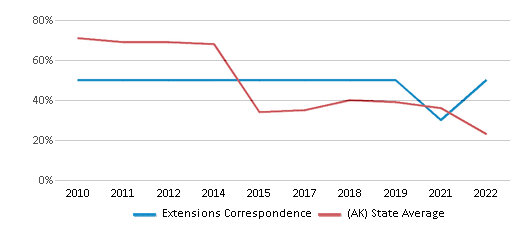
Reading/Language Arts Test Scores (% Proficient)
<50%
29%
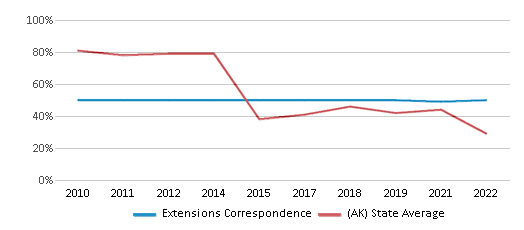
Student : Teacher Ratio
25:1
15:1
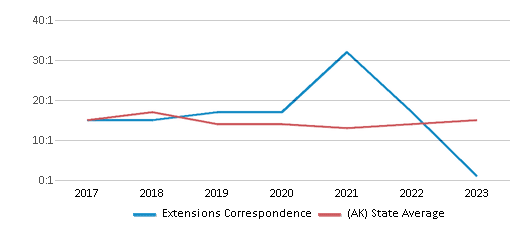
American Indian
48%
22%
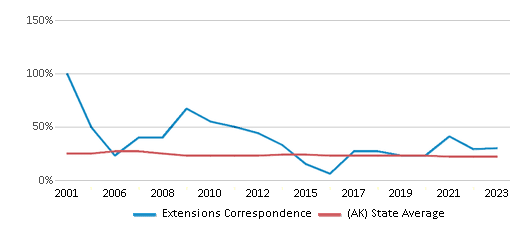
Asian
n/a
5%
Hispanic
n/a
8%
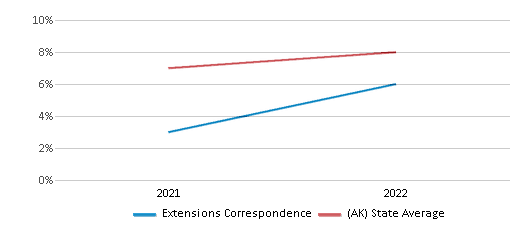
Black
n/a
2%
White
36%
47%
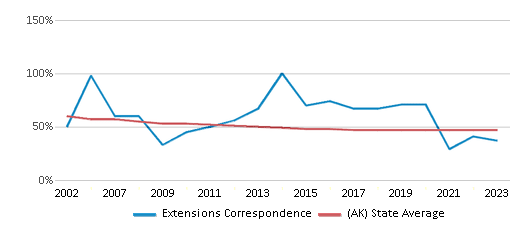
Hawaiian
n/a
3%
Two or more races
16%
13%

All Ethnic Groups
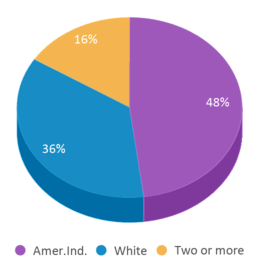

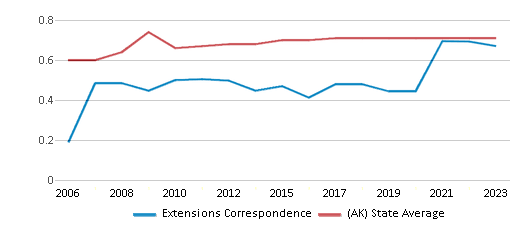
School Statewide Testing
School District Name
Source: National Center for Education Statistics (NCES), AK Dept. of Education
Profile last updated: 02/09/2025
Frequently Asked Questions
What is Extensions Correspondence's ranking?
Extensions Correspondence is ranked #37 out of 459 schools, which ranks it among the top 10% of public schools in Alaska.
What percent of students have achieved state testing proficiency in math and reading?
<50% of students have achieved math proficiency (compared to the 23% AK state average), while <50% of students have achieved reading proficiency (compared to the 29% AK state average).
How many students attend Extensions Correspondence?
25 students attend Extensions Correspondence.
What is the racial composition of the student body?
48% of Extensions Correspondence students are American Indian, 36% of students are White, and 16% of students are Two or more races.
What is the student:teacher ratio of Extensions Correspondence?
Extensions Correspondence has a student ration of 25:1, which is higher than the Alaska state average of 15:1.
What grades does Extensions Correspondence offer ?
Extensions Correspondence offers enrollment in grades Kindergarten-12
What school district is Extensions Correspondence part of?
Extensions Correspondence is part of Nome School District.
School Reviews
Review Extensions Correspondence. Reviews should be a few sentences in length. Please include any comments on:
- Quality of academic programs, teachers, and facilities
- Availability of music, art, sports and other extracurricular activities
Recent Articles

What Is A Charter School?
Explore the world of charter schools in this comprehensive guide. Learn about their history, how they operate, and the pros and cons of this educational innovation. Discover key facts about charter schools, including admission policies, demographics, and funding, as well as what to look for when considering a charter school for your child.

10 Reasons Why High School Sports Benefit Students
Discover the 10 compelling reasons why high school sports are beneficial for students. This comprehensive article explores how athletics enhance academic performance, foster personal growth, and develop crucial life skills. From improved fitness and time management to leadership development and community representation, learn why participating in high school sports can be a game-changer for students' overall success and well-being.

February 05, 2025
Understanding the U.S. Department of Education: Structure, Impact, and EvolutionWe explore how the Department of Education shapes American education, from its cabinet-level leadership to its impact on millions of students, written for general audiences seeking clarity on this vital institution.





